Tank Farm is essentially a storage area for the storage of liquid raw materials, solvents, intermediate & finished products. It is necessary to monitor the quantities of liquids which are stored in the tanks to have a proper reference to arrive at material balance, reorder levels, inventory management, forecasting, scheduling and sales invoicing.
The instrumentation package involves various options for level sensors, such as capacitance, hydrostatic, ultrasonic, and radar technology. Suitable temperature/density compensations are provided as per the special requirements, and the system can even calculate the corrected volume at NTP with necessary density corrections. Various types of solutions are available with nitrogen blanketing, padding, de-padding controls and solutions for agitator/foaming conditions wherever applicable.
The package also includes flowmeters, on-off valves for tank selection/isolation. Interlocks for pump operations, sequencing, safety features such as static electricity detectors, leakage detectors, and overflow protection can also be provided. In case of nitrogen blanketing systems, interlocks for maintaining the blanket pressures, pressure safety & vacuum relief valves, along with pressure control sequences for pressurized transfer applications can also be provided.
Key Components of Tank Farm Automation
Tank Level Monitoring
- Sensors: Automated systems use level sensors (ultrasonic, radar, capacitive, etc.) to continuously monitor the liquid levels in each tank.
- Controllers: Programmable logic controllers (PLCs) or distributed control systems (DCS) process sensor data to make real-time decisions, such as adjusting flow rates or triggering alarms when a tank reaches capacity.
Flow Control
- Automated valves, pumps, and pipelines can be controlled remotely or autonomously to regulate the inflow and outflow of liquids.
- Flow meters are used to measure the rate of liquid transfer, which helps in managing inventory and ensuring that pumps are operating at optimal rates.
Safety Systems
- Automated emergency shutdown systems (ESD) can detect hazardous conditions such as overflows, leaks, or pressure anomalies and take corrective actions (e.g., shutting off pumps or closing valves).
- Leak detection systems are integrated with sensors that monitor for the presence of leaks in pipelines and tanks, triggering immediate alerts for maintenance.
Inventory Management
- Automation systems can track inventory levels in real-time, providing an accurate and up-to-date view of tank contents.
- Automated systems can also generate reports on inventory status, usage, and projections for restocking, which helps optimize supply chain management.
Temperature and Pressure Control
- Sensors for temperature and pressure continuously monitor storage conditions to ensure the liquid is stored within the required range.
- Automated control systems adjust heating/cooling systems or manage venting to maintain safe conditions within the tanks.
Remote Monitoring and Control
- With advanced SCADA (Supervisory Control and Data Acquisition) systems or cloud-based platforms, operators can remotely monitor and control tank farm operations from anywhere.
- Mobile apps and dashboards allow operators to get real-time alerts and take corrective actions without needing to be on-site.
Data Logging and Reporting
Automated systems log all operational data, which can be used for regulatory compliance, analysis, and auditing.
This data can include tank levels, flow rates, temperatures, pressures, and safety incidents.
Environmental Monitoring
- In industries like petroleum or chemicals, automated systems monitor air quality, vapor recovery, and other environmental factors to ensure compliance with environmental regulations.
- Automated systems can also monitor for potential risks such as tank overfills or spills.
Benefits of Tank Farm Automation
Improved Safety
- By automating critical functions, the risk of human error is minimized, which reduces the likelihood of accidents, spills, or fires.
- Continuous monitoring for hazardous conditions enables quicker responses to prevent safety incidents.
Operational Efficiency
- Automation optimizes the use of equipment, reducing downtime and improving throughput.
- Automated inventory tracking reduces manual labor and improves stock management.
Cost Savings
- Automation reduces the need for manual interventions and on-site personnel, leading to cost reductions in labor and operational expenses.
- Energy efficiency is enhanced by optimizing processes like heating or cooling, leading to lower energy costs.
Regulatory Compliance
- Automated systems can help maintain strict compliance with local and international safety, environmental, and quality regulations.
- Accurate and consistent data logging ensures that all operational and safety activities are recorded, making audits easier and less time-consuming.
Enhanced Decision-Making
- Real-time data provides operators and management with valuable insights that can be used for decision-making and performance optimization.
- Predictive analytics can help forecast potential issues before they become problems, improving long-term maintenance strategies.
Scalability
- As tank farms grow in size, automation systems can easily scale to handle additional tanks, products, or processes without significant increases in manual labour.
Technologies Used in Tank Farm Automation
- PLC/DCS Systems: Programmable Logic Controllers (PLCs) and Distributed Control Systems (DCS) are widely used in tank farm automation for process control, data acquisition, and system management.
- SCADA: Supervisory Control and Data Acquisition systems are essential for remote monitoring, control, and reporting. They provide centralized control and allow operators to monitor real-time data and manage processes remotely.
- IoT and Cloud Computing: Internet of Things (IoT) sensors, integrated with cloud-based platforms, provide more advanced data analytics, enabling better decision-making and predictive maintenance.
- Wireless Communication: Wireless technologies help enable real-time data transmission from tanks and other equipment to central monitoring systems, even in remote or hazardous environments.




